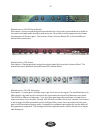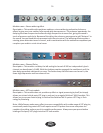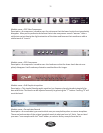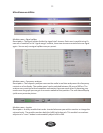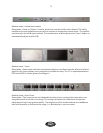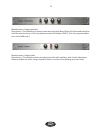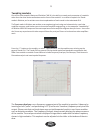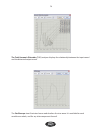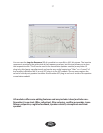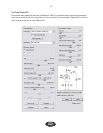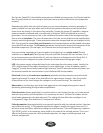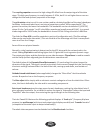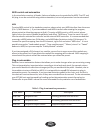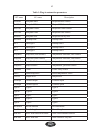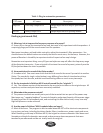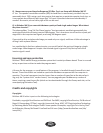
On the tube Tweak GUI, the editable parameters are divided into two groups, the Physical and the
Non-Physical (which has no mean ing in reality but can be used to enhance the sonic properes,
anyway).
Depending on which tube you wish to tweak, you can choose between triodes or pentodes. A
power pentode is a tube type oen used to drive the speakers; therefore you will usually nd
them as the last tube(s) in the chain of any amplier. Triodes are voltage (V) ampliers, whereas
power pentodes (combined with a transformer) in ReValver® MK III are treated as current (I)
generators. You can replace any tube in the module with another tube of the same general type,
from a stock of templates. The internal parameters of a tube consist of features like amplica on,
linearity and driving strength. These parameters cannot be changed and are not displayed on the
GUI. If you check the opon OnlyLoadInternals, only these parameters will be loaded, otherwise
the enre GUI will be reset. The Character parameter can be used to shape the frequencies of the
distorted component. (On low input, the Character has minimal impact on the sound.)
If you are eding a pentode you have the opon of conguring it as a single-ended (Class A)
amplier or as a push-pull (Class B) amp. One push-pull tube is actually an even-number 2 or 4,
but as the parameters are idencal for all, only one tube icon is displayed on the Tweak GUI. A
tri ode can only be congured as a plate follower (a cathode-biased voltage gain stage).
VPP is the power supply voltage delivered to the tube stage from the power supply. Usually, the
VPP is slightly lower if the stage is located early in the signal chain. In case the power supply is
“sag ging” (usually due to heavy load and high volumes), the VPP becomes temporarily lower, but
the amount depends on internal values in each ReValver MK III amp module.
Plateload (triode) and transformerimpedance (pentode) and the parameters over which the
signal is generated. The value of the load aects the signal output strength. Also, the transfer
characteriscs of the load changes the voltage on, and current through, the tube itself.
Aenuaon is not directly a part of the tube stage but can be thought of as a generic way of
decreasing (aenuang) the signal aer amplicaon.
Cathoderesistor (where applicable) is a resistor which is used to bias the tube, or in other words
balance the symmetry of the waveform. It is commonly set near 1.5 kOhms for triodes, but the
actual seng depends on the desired sound. The seng will also aect the overall gain in an
“unbypassed” stage. (See denion of “unbypassed” below.)
Cathodecapacitor (where applicable) is connected in parallel with the cathode resistor. It has two
main eects on sound: 1) The capacitor enables the stage to amplify the signal more; and 2) It
will act as a low-shelf lter, eecvely cung out some low bass. The cuto frequency is equal to
1/(6.28*RC), with C as the capacitor value and R as the value of the cathode resistor. This in turn
aects the distoron spectrum. With a cathode capacitor, the stage is called bypassed, and
without, unbypassed.
39



